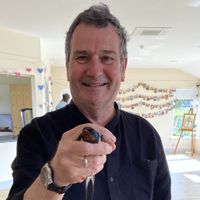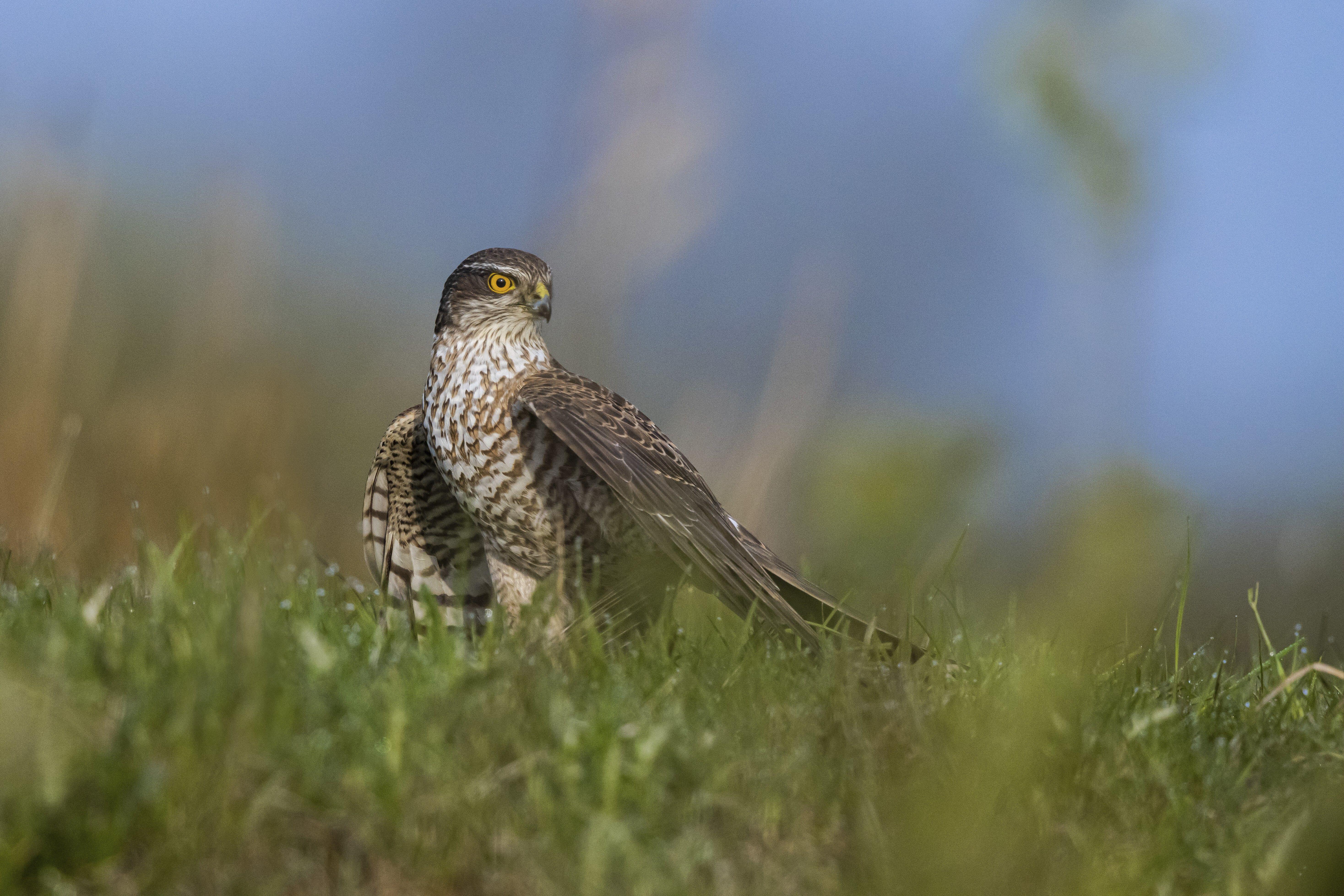‘Though she be but little, she is fierce’: Everything you didn't know about sparrowhawks
Scourge of the bird feeder and a master of ‘shock and awe’ assassinations, the sparrowhawk pursues its quarry with such tenacity and unpredictability that it often blindsides its prey.


Readers may be surprised to learn that, by weight, the male sparrowhawk (Accipiter nisus) is our smallest bird of prey. He can be a mere 4oz (about 113 grams) and is often dwarfed by his partner: the female sparrowhawk is on average 75% heavier than her mate. However, all sparrowhawks compensate for their lack of heft with a gift for startling unpredictability. Often the best indicator of their presence is a sudden hullabaloo among the local songbirds. Then comes the cause of the anxiety: a round-winged hawk bursting forth in classic fashion, flap-flap-glide, flap-flap-glide. In an instant, it surges away and vanishes.
The ornithologist Leslie Brown, known for his brilliant work in East Africa, suggested that the sparrowhawk gives an ‘impression of nervous tension unequalled by any other raptor’. It is, as a consequence, extremely difficult to observe well. Anyone lucky to have a prolonged view sees the lateral bars slashed across the pale underparts; in males, these are warm rusty brown and contrast beautifully with his blue-grey back. Even in moments of such intimacy, however, the aura of tightly wound energy is there in the bird’s fierce, yellow-eyed stare.

The sparrowhawk’s strategy as a predator could be described as shock and awe. The birds hunt right into our city centres, using houses as lookouts or as a means to blindside their prey. They will weave across back yards, ducking under washing lines and ghost through gardens at breakneck speed. So relentless is their pursuit that they will sometimes follow prey into the house: I recall vividly a friend describing a panicked swallow swooping into her kitchen with a hawk hot on its tail. Perhaps it was this reckless courage, packed into so tiny a frame, which made the sparrowhawk the favourite hunting bird of Mughal emperor Akbar.
More recently, the species has learned that garden feeders full of birdseed support far more than tits and finches. Those may take the intended supplies, but sparrowhawks then take any unwary songbird. It is these garden assassinations, often involving a victim that the houseowner considers their blackbird or robin, which can give sparrowhawks a bad name. In truth, the moment of capture is a curiously measured event. A hawk seldom tears at its prey instantly: rather, it stands there, scanning around as it pauses, gradually squeezing and bringing into play stiletto-like claws on the hind and third toes, as if it were kneading life patiently from the victim.
The old country name — the ‘sparrow’ hawk — was well chosen and is also repeated in the Dutch, German and Swedish equivalents. No small songbird is safe, especially from the dainty male, but sparrowhawks are by no means limited by size in prey choice. The list runs to 120 bird species and includes curlews and oystercatchers, as well as wildfowl up to the size of shelduck. If female sparrowhawks have a favourite food, it is possibly pigeon and newly plucked birds, their feathers encircling the well-picked carcass, are often proof that she has been active in the local wood.
It’s estimated that there are some 31,000 pairs in Britain, making the sparrowhawk one of our most abundant and widespread raptors. The presence of trees, especially conifers, is a pre-requisite for sparrowhawk nest sites, but they are far from averse to feeding in open country. They readily venture onto pasture or moors where walls or hedges supply the necessary ambush opportunities. Whereas most of us are now familiar with this glorious hawk, it was not always the case. From the late 1950s onwards, it vanished from much of Britain; it was gradually discovered that agrochemicals such as DDT were causing the birds to lay eggs with unnaturally thin shells, which were then breaking in the nest before the embryo could develop. Breeding success plummeted until the species was scarce almost everywhere, but it has since undergone a complete resurrection.
This has now been followed by a dip in fortunes, although this recent reversal might eventually be received positively. Together with the omnipresent kestrel, sparrowhawks were once the only other bird of prey to enrich a day out in the country. Today, our guild of raptors is wider and deeper, and includes not only buzzards and red kites, but also ospreys, goshawks and marsh harriers. Inter-family competition may possibly account for the recent adjustment. However, the ongoing abundance of sparrowhawks is proof that this master of shock tactics is more than holding its own.
Exquisite houses, the beauty of Nature, and how to get the most from your life, straight to your inbox.
Mark Cocker's latest book, ‘One Midsummer’s Day: Swifts and the Story of Life on Earth’, is out in paperback
This feature originally appeared in the July 23, 2025, issue of Country Life. Click here for more information on how to subscribe
Mark Cocker is a naturalist and multi-award-winning author of creative non-fiction. His last book, ‘One Midsummer’s Day: Swifts and the Story of Life on Earth’, is out in paperback. A new book entitled 'The Nature of Seeing' will be published next year by Jonathan Cape.
